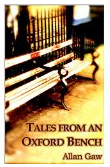‘Well, I never knew that and I’ve been here for over twenty years. Are you sure? Did you know that?’ Her friend, who looked as if she had been asked many such questions in those twenty years, nodded wearily and smiled apologetically to me. ‘Well, I didn’t. Are you sure? Charles Rennie who did you say?’
The Two English ladies had emerged from the small Somerset church and had met me on the steps outside. ‘You’d better hurry if you want any tea—they stop serving at eleven.’ I had explained that I hadn’t come for the tea but rather to see the church. That 120 years ago the Scottish architect and designer, Charles Rennie Mackintosh, then a trainee architect had visited the All Saints Church in Merriott while on a sketching holiday of the southwest. He had drawn the church’s tower and the following year had used that sketch as the design for a church he built in Glasgow. All this had prompted the astonishment and, well, frank disbelief from the first woman and a polite smile from the second. As I slipped into the church to catch the last of the coffee morning, I could still hear the two discussing the event of the day. ‘All the way from Scotland he said, surely not…not just for our church.’ Her steps quickened as she walked down the street. I expect there were phone calls to be made.
Inside, I met someone in charge of the situation who served me tea, carrot cake (homemade) and some history. The church had been there in one form or another for a long time. The square tower, with its unusually tapering sides and octagonal clock turret, had probably been built around 1500, but like all churches the whole was a mixture of times and styles. ‘We had visitors recently who just sighed when they saw the place—all messed up they said, bit of this and a bit of that.’ I reassured her that the church, which she was making carrot cake for, was a thing of beauty and that I had come a long way to see it. And it was, and I had. Like every old, working building this church was a palimpsest, overwritten by successive generations and reinvented for new purposes.
The tower construction that had so fascinated Mackintosh when he had sat at the far corner of the graveyard and made his pencil sketch in 1895 was likely a result of fiscal necessity over medieval style. The written guide inside the church described it as ‘curiously unfinished’ and suggested that this may have been because ‘they ran out of money.’ Well, their poverty resulted in a design that captivated one of the greatest creative minds of the late 19th and early 20th centuries. In truth, Mackintosh’s sketch gives the somewhat squat tower rather more elegant lines—lines that he would further refine and extend in his designs for Queen’s Cross Church in Glasgow. Perhaps he drew it the way he saw it that day or maybe he was already refining and redesigning as he sketched. Whatever the case, the Merriott Church tower undoubtedly became one of the key elements of his design and was the reason for my visit.
There has long been a desire to seek out the source. Whether it be the spring that gives rise to the greatest of rivers, or the inspiration for the greatest of ideas, we feel the need to explore their provenance. By retracing the footsteps of a creative journey we feel we might better understand the destination.
As I sat on the grass in the graveyard where Mackintosh had sat and looked at the tower just as he had looked, I wondered if I was indeed seeing the same sight. He was a creative genius and I am not, so were my eyes the same as his, were my thoughts of the tower his thoughts? Of course not, and the sadness is that I will never know what exactly he saw in those stones. I thought the tower was beautiful and unusual and oddly pleasing, but he took it and connected it with a mind full of art and design and architectural understanding and made it his own. And perhaps that’s what creativity is — an assimilation of what is there to be seen and what might be.
The following year, as well as designing his Church in Glasgow, Mackintosh also made a drawing that he entitled, ‘Part Seen, Imagined Part’. This is a study for a mural he was planning and depicts the figure of a woman rising from a flowering bush. But, it’s not that she is simply standing in or behind the bush, but rather that she seems to be growing organically from the tangle of tendrils and shoots. This fusion of the real, the ‘seen’, with the imaginary is one of the hallmarks both of Mackintosh’s work and the work of all creative geniuses. They take what the world has to offer and they refine it, develop it and make it rather magical.
In science we do the same, even more literally perhaps, for observation is the essential prerequisite of all discovery. The creative originality comes in how we then put those observations together. Mackintosh found the beginnings of his church design in Somerset, and 120 years later I rediscovered his viewpoint and found the beginnings of a better understanding of how we might look at the world and discover something new.
© Allan Gaw 2014
My books available on kindle:









